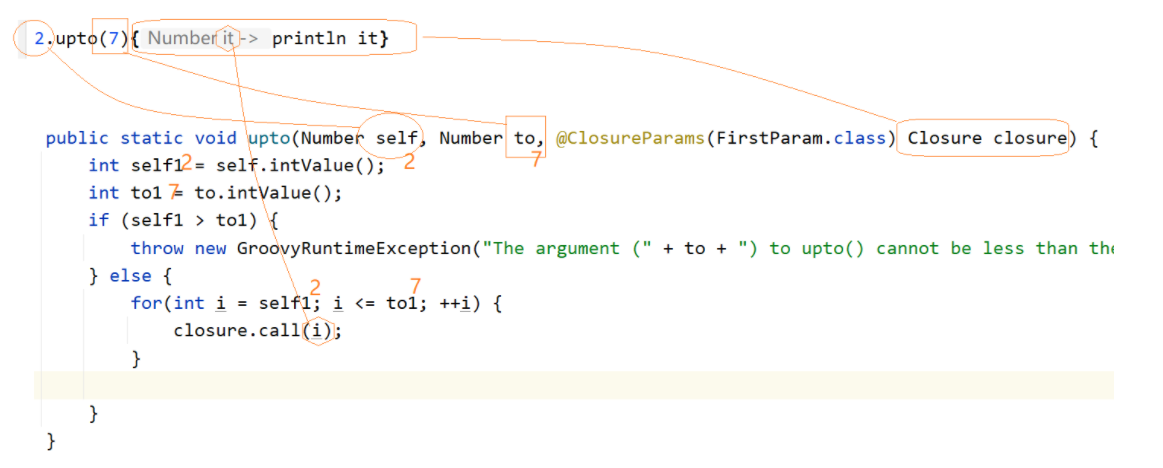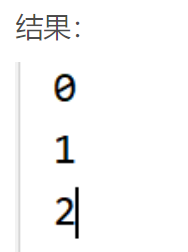3.5 闭包
3.5.1 闭包的基本技能点
闭包的定义:
闭包就是一段代码块,用{}括起来:
**闭包调用/执行:
闭包传入参数:**
无参数:
可以传入一个参数:
可以传入多个参数:(用逗号隔开参数即可)
有默认的参数:
所有闭包都有一个默认参数,不需要你显式声明,用it接收
如果你不想叫it,那么就需要自己手动显式将参数定义即可,一旦定义那么就没有默认参数了(隐式参数)
闭包返回值:
闭包一定有返回值,如果不写,就相当于返回null
可以定义返回值:
3.5.2 闭包的常见使用场景
1、与基本数据类型结合使用(for循环场景)
(1)案例:从2-7进行遍历: -------**upto
底层对应源码:

(2)案例:1+2+3+。。。。+100 -------**upto
(3)案例:输出7-2 -------**downto
(4)案例:输出100以内的数 --- times (从0开始遍历到指定数结束)


(5)案例:1+2+。。。100 ----- times
补充:写法两种:
**2、与字符串结合使用





【推荐】国内首个AI IDE,深度理解中文开发场景,立即下载体验Trae
【推荐】编程新体验,更懂你的AI,立即体验豆包MarsCode编程助手
【推荐】抖音旗下AI助手豆包,你的智能百科全书,全免费不限次数
【推荐】轻量又高性能的 SSH 工具 IShell:AI 加持,快人一步
· 全程不用写代码,我用AI程序员写了一个飞机大战
· MongoDB 8.0这个新功能碉堡了,比商业数据库还牛
· 记一次.NET内存居高不下排查解决与启示
· DeepSeek 开源周回顾「GitHub 热点速览」
· 白话解读 Dapr 1.15:你的「微服务管家」又秀新绝活了